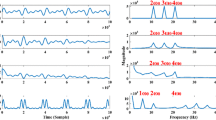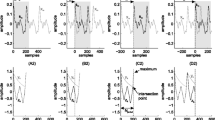Abstract
A new Short-Time Fourier Transform (STFT) pipeline is presented which uses a two-pass method to adapt the size of the analysis window to the period of the signal, which is assumed in this case to be at least pseudo-periodic. The pipeline begins with pitch estimation, followed by upsampling, to construct a new analysis window that matches the length of a single period. This reduces or eliminates the spectral leakage problems which are typical of traditional STFT analysis techniques. The result is a discrete and accurate spectral representation that provides highly accurate location of partials from one analysis frame to the next. We have extended this method to allow noise cancellation by selecting an analysis window that contains a small whole number of complete cycles. We also present a new display method based on this pipeline which greatly improves the spectrogram through enhanced distinction among partials. Finally, validation is performed by signal restoration on 40 clips, showing the superiority of the pipeline for true periodic signals and comparability for pseudo-periodic signals.
Access this chapter
Tax calculation will be finalised at checkout
Purchases are for personal use only
Similar content being viewed by others
Notes
- 1.
The threshold is also subtracted from any coefficient that is greater than the threshold in a soft thresholding. This not only smooths the time series, but moves it toward zero, which is not desired.
References
Auger, F., Flandrin, P.: Improving the readability of time-frequency and time-scale representations by the reassignment method. IEEE Trans. Signal Process. 43, 1068–1089 (1995)
Breitenbach, A.: Against spectral leakage. Measurement 25(2), 135–142 (1999). http://www.sciencedirect.com/science/article/B6V42-3X652TH-C/2/0e63c15ee62b1307b871d9463caa6438
Canazza, S.: Noise and Representation Systems: A Comparison among Audio Restoration Algorithms. Lulu Enterprise, USA (2007)
de Cheveigné, A.: Hearing science and speech recognition. Technical report, IRCAM, February 1998
de Cheveigné, A., Kawahara, H.: YIN, a fundamental frequency estimator for speech and music. J. Acoust. Soc. Am. 111(4), 1917–1930 (2002)
Gerhard, D.: Pitch extraction and fundamental frequency: history and current techniques. Technical report, Department of Computer Science, University of Regina, November 2003
Hidalgo, R., Fernandez, J., Rivera, R., Larrondo, H.: A simple adjustable window algorithm to improve FFT measurements. IEEE Trans. Instrum. Measur. 51(1), 31–36 (2002)
Liuni, M., Robel, A., Matusiak, E., Romito, M., Rodet, X.: Automatic adaptation of the time-frequency resolution for sound analysis and re-synthesis. IEEE Trans. Audio Speech Lang. Process. 21(5), 959–970 (2013)
Min, K., Chien, D., Li, S., Jones, C.: Automated two speaker separation system. In: Proceedings of IEEE ICASSP, pp. 537–540 (1988)
Morise, M.: A method to estimate a temporally stable spectral envelope for periodic signals. In: Proceedings of Meetings on Acoustics, vol. 19, p. 060022. Acoustical Society of America (2013)
Vích, R., Vondra, M.: Pitch synchronous transform warping in voice conversion. In: Esposito, A., Esposito, A.M., Vinciarelli, A., Hoffmann, R., Müller, V.C. (eds.) COST 2102. LNCS, vol. 7403, pp. 280–289. Springer, Heidelberg (2012)
Xu, F.: Algorithm to remove spectral leakage, close-in noise, and its application to converter test. In: Proceedings of the IEEE Instrumentation and Measurement Technology Conference, pp. 1038–1042, April 2006
Author information
Authors and Affiliations
Corresponding author
Editor information
Editors and Affiliations
Rights and permissions
Copyright information
© 2014 Springer International Publishing Switzerland
About this paper
Cite this paper
Zhao, Y., Gerhard, D. (2014). Waveform-Aligned Adaptive Windows for Spectral Component Tracking and Noise Rejection. In: Aramaki, M., Derrien, O., Kronland-Martinet, R., Ystad, S. (eds) Sound, Music, and Motion. CMMR 2013. Lecture Notes in Computer Science(), vol 8905. Springer, Cham. https://doi.org/10.1007/978-3-319-12976-1_27
Download citation
DOI: https://doi.org/10.1007/978-3-319-12976-1_27
Published:
Publisher Name: Springer, Cham
Print ISBN: 978-3-319-12975-4
Online ISBN: 978-3-319-12976-1
eBook Packages: Computer ScienceComputer Science (R0)




